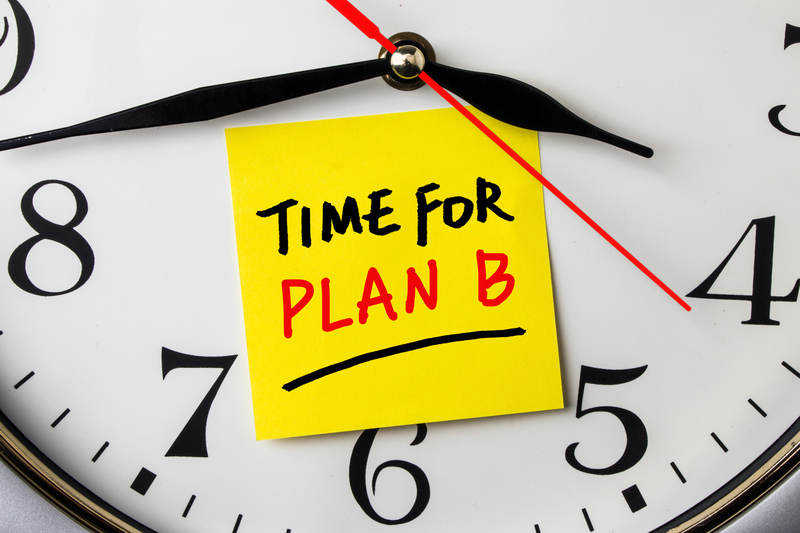Steps to Take When Moving After a Split
Posted on 09/04/2025
Moving after a split can be an emotionally and logistically challenging experience. Whether the separation was amicable or contentious, the process of uprooting your life and establishing a new household requires careful planning and deliberate action. This comprehensive guide is designed to help you navigate the complexities of moving after a breakup or divorce, ensuring a smoother transition and the opportunity to start fresh.
1. Acknowledge Your Emotions
The end of a relationship, whether it's a breakup or divorce, often brings a whirlwind of emotions. It is essential to acknowledge and reflect on your feelings, rather than suppress them. Take time to process what has happened. This might mean talking to friends, family, or even a therapist. Emotional clarity is extremely important for making informed decisions throughout the moving process.

2. Assess Your Financial Situation
A breakup can significantly impact your financial stability, especially if you were sharing expenses. Conduct a detailed financial assessment to understand your budget constraints. This includes:
- Reviewing bank accounts, credit cards, loans, and any shared financial agreements.
- Creating a comprehensive list of monthly income and expenses.
- Planning for the costs associated with moving, including hiring movers, purchasing packing supplies, and potential deposits for a new rental.
It is also advisable to consult a financial advisor to help you navigate any complexities, especially if you were married or shared significant financial assets.
3. Decide What to Take with You
Sorting through shared belongings can be one of the most stressful aspects of moving out. Here are some steps to facilitate this process:
- Inventory Everything: Make a list of all shared items and categorize them into essentials and non-essentials.
- Mediate Asset Division: If possible, discuss amicably how to divide assets. This might include furniture, kitchenware, electronics, and other shared items.
- Prioritize Sentiment and Functionality: Decide what holds sentimental value and what you genuinely need. Don't hold on to items because they remind you of the past relationship unless they hold significant value to you personally.
4. Notify Relevant Parties
Moving involves changing your address and notifying multiple parties of your new location. Create a checklist of all the parties you need to inform:
- Government Agencies: Update your address with the postal service, DMV, and voter registration.
- Banks and Financial Institutions: Notify your bank, credit card companies, and any loan providers.
- Utilities: Arrange for utilities to be disconnected at your old place and connected at your new place.
- Insurance Companies: Update your address with health, car, and home insurance providers.
- Subscriptions and Deliveries: Modify the address for any magazines, meal services, or subscription boxes you receive.
5. Hire Professional Movers
Depending on the volume of items you need to move and your budget, consider hiring professional movers. Movers can ease the physical burden of relocating and ensure your belongings are transported safely. Be sure to:
- Get Multiple Quotes: Obtain estimates from different moving companies to find one that fits your budget.
- Check Reviews: Read reviews and ask for recommendations to ensure you're hiring a reputable company.
- Confirm Details: Verify the moving date, time, and any additional services you might require, such as packing and unpacking.
6. Plan Your New Space
Envisioning your new living environment can be both exciting and daunting. Planning ahead can help you create a space that feels like home:
- Measure New Space: Obtain measurements of your new place to plan the layout and ensure your furniture fits.
- Decorate Thoughtfully: Use this opportunity to redecorate according to your taste. Surround yourself with items that bring joy and comfort.
- Organize Efficiently: Organize your belongings in a way that makes daily living convenient. Use storage solutions like bins, shelves, and under-bed storage to maximize space.
7. Seek Support Systems
Don't go through this challenging time alone. Rely on your support system to help you through the transition.
- Friends and Family: Lean on close friends and family members for emotional and physical support. They can assist with packing, moving, and providing much-needed companionship.
- Professional Help: Consider engaging a therapist or counselor to help you process your emotions and develop healthy coping mechanisms.
- Community Resources: Look for local community centers or support groups for individuals going through a similar experience. Sharing your story and hearing others' experiences can be incredibly healing.
8. Take Care of Yourself
During a move post-split, self-care can easily fall to the wayside. However, taking care of your physical and mental health is crucial during this period.
- Maintain a Routine: Keeping a regular routine can provide a sense of normalcy. This includes regular sleep, meals, and exercise.
- Healthy Eating: Ensure you're eating balanced meals and staying hydrated.
- Mindfulness and Relaxation: Practice mindfulness, meditation, or yoga to reduce stress and improve mental well-being.
9. Legal Considerations
For those going through a divorce, there may be legal ramifications associated with moving out.
- Consult Your Lawyer: Before making any major decisions, consult with your divorce lawyer to understand the legal implications. This includes custody arrangements, asset division, and any ongoing proceedings.
- Document Everything: Keep detailed records of all communications and transactions related to the move. This can be helpful for legal purposes.

10. Embrace the New Chapter
Lastly, remember that moving after a split marks the beginning of a new chapter in your life. Embrace it with a positive outlook. This is an opportunity for growth, self-discovery, and the creation of a living space that reflects who you are.
Conclusion
Moving after a split is undoubtedly challenging, but it is also a step towards a new beginning. By acknowledging your emotions, planning meticulously, and seeking support, you can navigate this transition with resilience and grace. Embrace this change as an opportunity to redefine your living space and, ultimately, your life.







